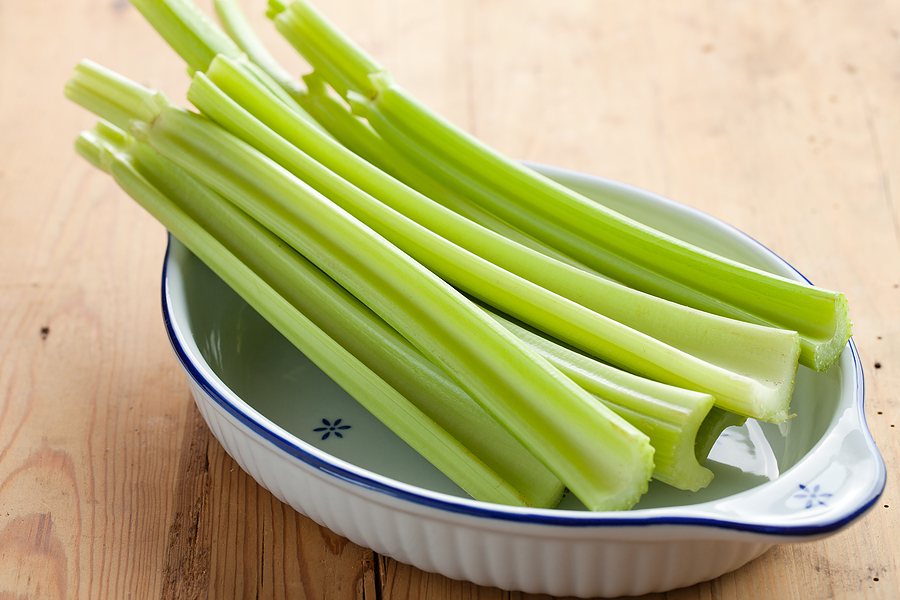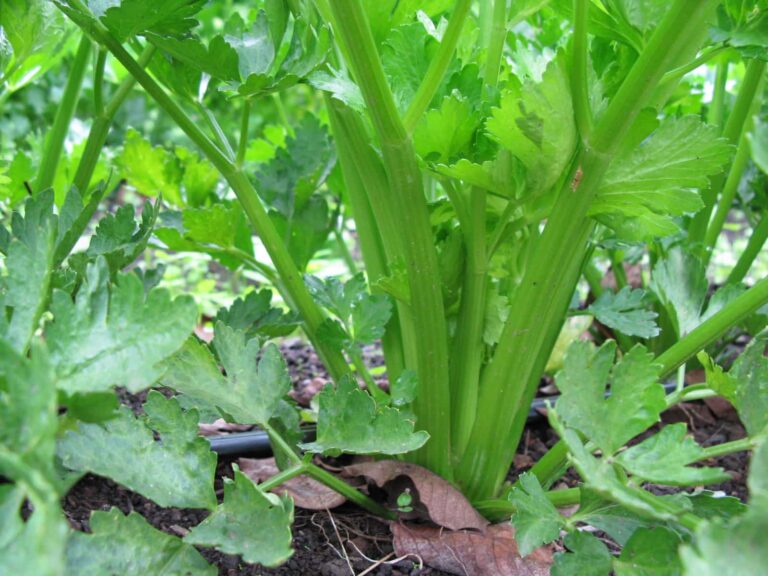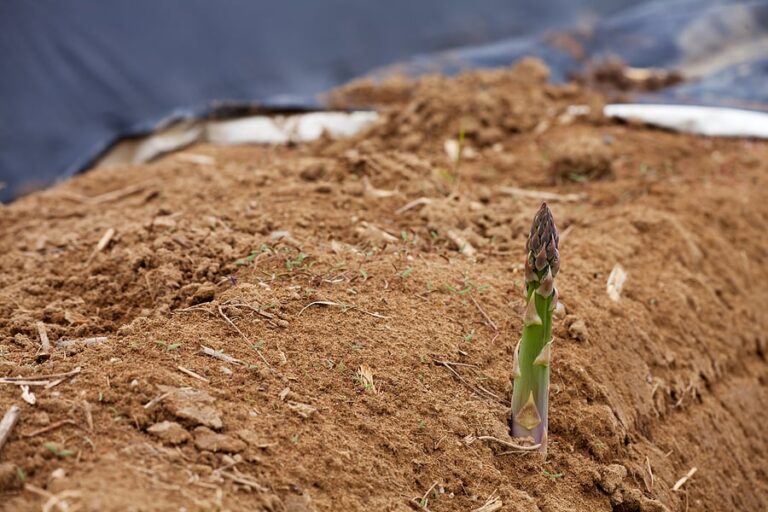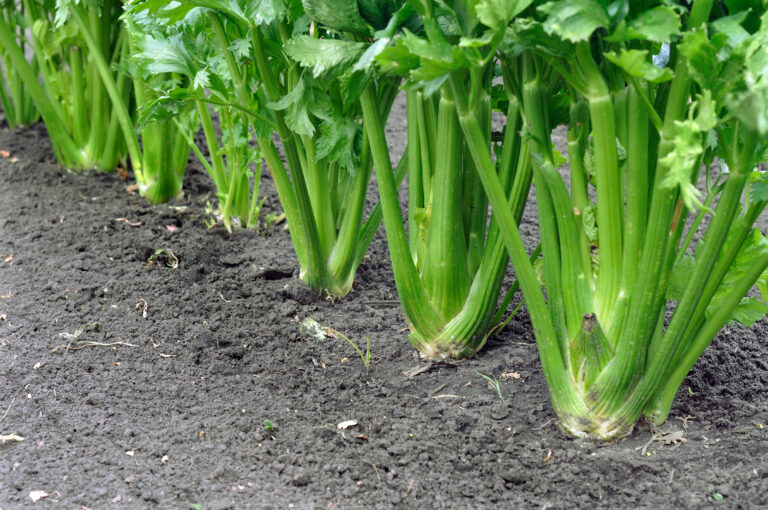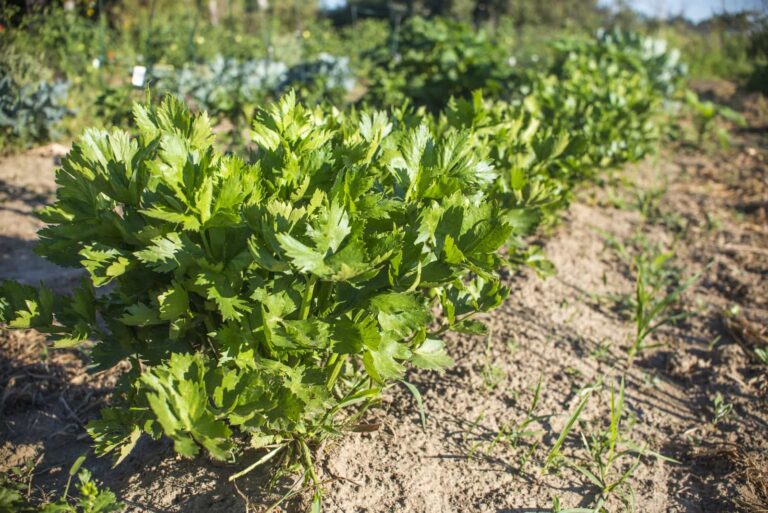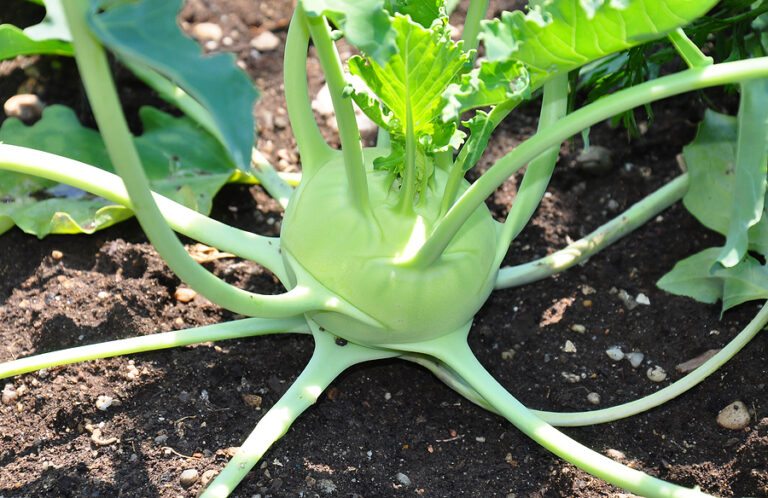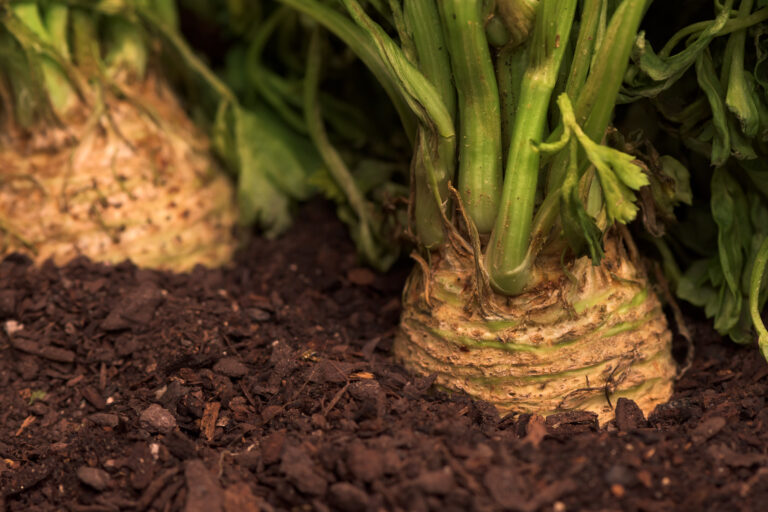Celery Blanching Techniques: How to Get Tender, Mild Stalks
Celery is naturally crisp and flavorful, but without blanching, the stalks can be tough and bitter. Over my 30+ years of gardening in Sonoma Valley, I’ve found that blanching celery significantly improves tenderness and flavor, making it perfect for fresh eating, cooking, or presentation. In this guide, I’ll share proven blanching techniques, step-by-step instructions, and tips to get mild, pale stalks without compromising yield.
Why Blanch Celery?
Blanching celery:
- Reduces bitterness and stringiness.
- Produces pale, tender stalks for cooking or raw use.
- Improves texture for gourmet dishes or gifting.
Blanched celery is especially valued in soups, salads, and elegant vegetable platters.
Methods for Blanching Celery
1. Soil Mounding (Traditional Method)
- About 2–3 weeks before harvest, gently mound soil around the base of the celery plant.
- Cover the stalks to block sunlight, leaving only the leaves exposed.
- Water consistently to maintain moisture in the mound.
Tip: Use soft soil or compost to avoid bruising the stalks.
2. Cardboard or Paper Wrapping
- Gather stalks in small bundles.
- Wrap them loosely with strips of cardboard or thick newspaper.
- Secure lightly with string or clips.
- Leave for 2–3 weeks before harvesting.
Benefit: Prevents direct sunlight and produces uniformly pale, tender stalks.
3. Tube or Cylinder Method
- Place a short cylinder (plastic or cardboard) around the base of each plant.
- Fill with soil or mulch to cover the stalks while leaving the tops open.
- Remove before harvesting.
Advantage: Works well in raised beds or container-grown celery.
Tips for Successful Celery Blanching
- Blanch only when stalks are nearly full-sized to avoid stunted growth.
- Keep soil evenly moist to prevent bitterness.
- Monitor for pests; cover methods can attract slugs if damp.
- Blanch in late fall or early winter for best flavor in cool climates.
My Experience Tip
I’ve found that mounding soil and mulching simultaneously works best for long-season celery. It keeps the stalks tender while conserving moisture and reducing weeds.
Final Thoughts
Blanching celery transforms ordinary stalks into tender, mild, and visually appealing vegetables. With these simple techniques—soil mounding, wrapping, or tube methods—you can enjoy gourmet-quality celery from your garden.
Celery Growing Hub
Start here: The Ultimate Celery Growing Guide: From Seed to Harvest
Celery Basics & Types
- Types of Celery Explained: Pascal, Leaf, and Celeriac Compared
- Best Celery Varieties for Home Gardeners
- Celery vs. Celeriac: Growing, Harvesting, and Cooking Differences
- What You Should Know About Celery Pollination
Planting & Site Prep
- When to Plant Celery by USDA Zone
- Celery Seed Starting Tips
- Direct Sowing Celery: Outdoor Seed Starting Guide
- Proper Celery Spacing and Planting Layout for Healthy Growth
- The Best Companion Plants for Celery and What to Avoid
- How to Grow Celery in Containers or Pots
Care & Maintenance
- How to Water Celery for Crisp, Tender Stalks
- Fertilizing Celery: Feeding Tips for Bigger, Tastier Stalks
- Celery Blanching Techniques: How to Get Tender, Mild Stalks
- Celery Care Throughout the Growing Season
Pests & Diseases
- Common Celery Pests and Diseases How to Control Them Naturally
- Celery Growing Problems: Troubleshooting
Harvest & Beyond

